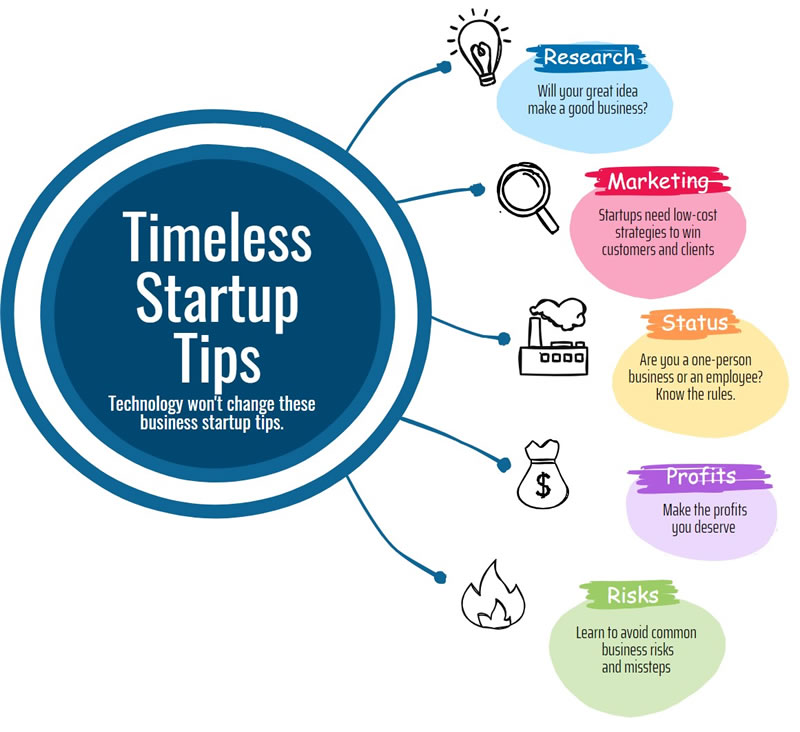I’ve been my own boss for more than 40 years. During those 40 years, I’ve written books for startups, built a small business content website that reached millions of people a year before another company acquired it, and launched an ecommerce site that developed a steady stream of repeat customers.
During that time, I’ve seen technology revolutionize the way we start and do business. And, I was often an early adapter of those technological changes. They made my own startup and business growth possible.
In the 1980s I jumped at the chance to buy a “microcomputer” because I was a terrible typist. I worked as a freelance writer back then, and every time I wrote an article, I’d wind up spending a full day retyping pages so they’d be typo-free and neat enough for the editors to work on.
One of my steady freelance gigs was writing medical abstracts for a company that was an early adapter of digital typesetting. Their writers were offered two ways to deliver work: Go to their office and retype their work into the company’s VAX computer system or write the abstract at home on a computer and transfer the document via modem. (A modem was a device that let you use a telephone line to transmit and receive computer data.)
I bought a modem.
The modem led me to discover early bulletin board systems and the nascent online world. Soon, I was a startup running an online forum — at a time when most people didn’t know what “online” meant.
I was an early user of desktop publishing software, digital cameras, early “mobile” phones, pay-per-click advertising, and any new technology that I could afford and that would help my business. Even today, I still can’t resist the urge to try new technology. So, I’ve been experimenting with ways to use AI in business since 2022.
Business Tips That Never Get Outdated
Despite all the changes technology has brought to our businesses and our livelihoods, there are some basic aspects of business that haven’t changed and probably never will.
I was reminded about the “evergreen” aspects of business startups recently when I had to empty out the basement after a washing machine hose broke and caused a flood.
One of the things I found was a box containing some transparencies from presentations I gave in the late 1990s and early 2000s. Transparencies were sheets of plastic that you printed or drew your presentation on. They’d be placed on a projector screen to be shown to the audience.
I had a notebook computer back then (early adapter of those, too). But at that time, you couldn’t count on being able to hook up your computer to all projectors. So, I always printed out the presentation on transparencies.
As I started digging through the box, I realized the information on a lot of the transparencies is just as valid now as it was 20+ years ago.
Here are just a few examples. A couple of the transparencies got wet and are blurry, but they’re still readable.
Important Startup Facts to Gather
Not all “great” ideas make good businesses. Therefore, two important things you need to do before you put much time or money into starting a business are to define what you’ll be selling and validate your idea. This transparency hits on some of the key considerations.
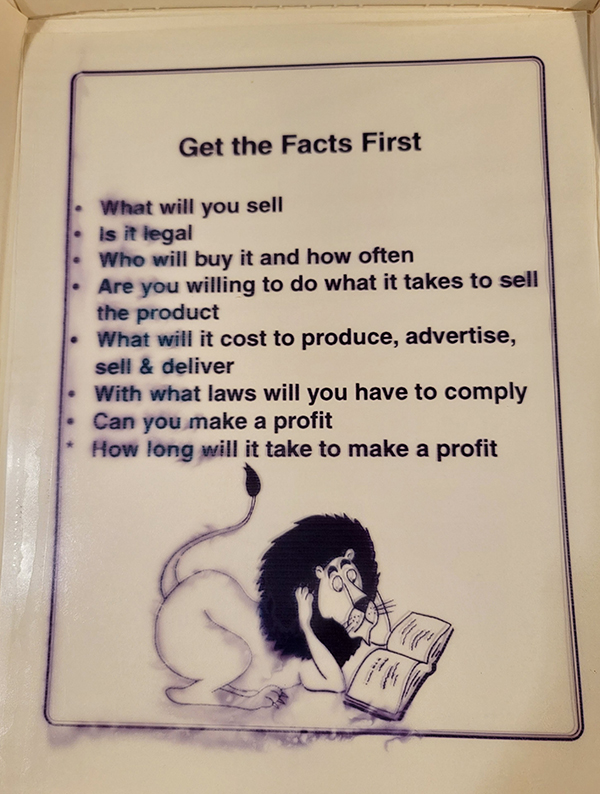
People who are starting a business don’t always have a handle on what it actually will cost to be in business. And that’s understandable. If you’ve never been in business you tend to think of what something costs to sell and how much you can sell it for. But there are a lot of other costs you need to account for. The items on this transparency still factor into pricing and profitability.
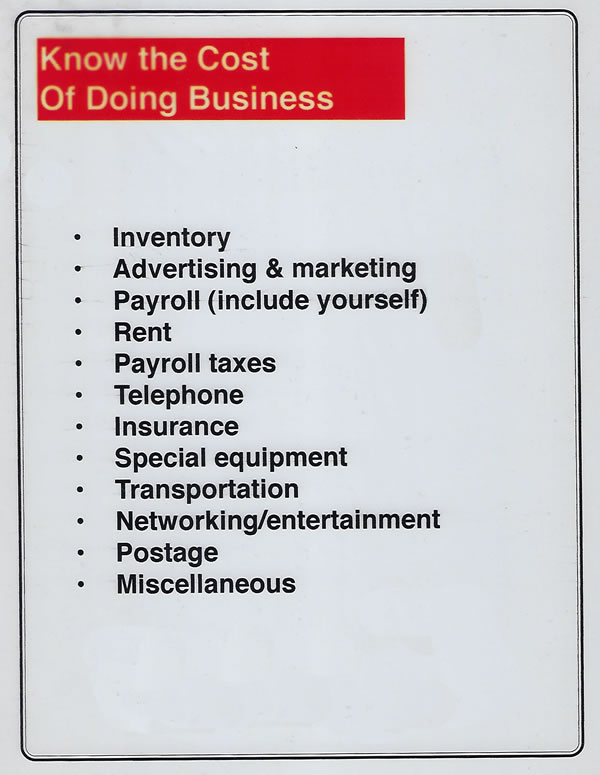
Evergreen Marketing Tips for Startups
If you’re a first-time business owner, you probably have a list of tasks to complete before you actually start the business. Besides researching the viability of the business, those tasks include things like naming the business, deciding how they’ll operate the business for tax purposes, getting any needed licenses and permits, etc.
But once those tasks are finished, you face the biggest startup challenge: winning customers on what is usually a shoestring budget. Although digital marketing has greatly changed the way businesses woo customers, the underlying marketing principles haven’t really changed.
One of those principles is the need to keep marketing costs down when you are starting out. This slide is one of several that covered low-cost marketing methods.
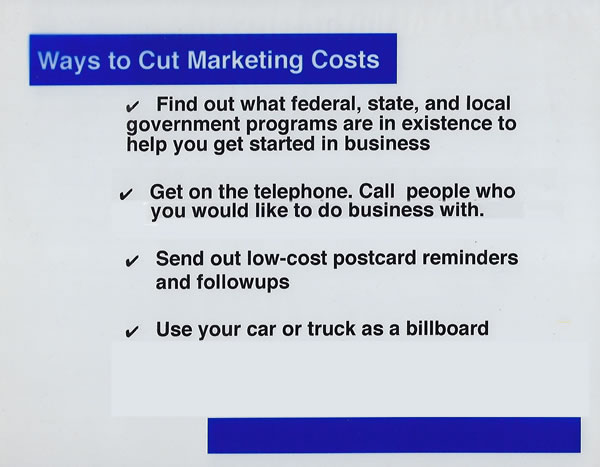
Many of the tips from other slides in that presentation were repurposed and used in this marketing article I wrote, which originally appeared on BusinessKnowHow.com.
Getting those first customers can sometimes prove very difficult when you’re starting a business. This slide presents some marketing mistakes that are just as prevalent now as they were years ago.
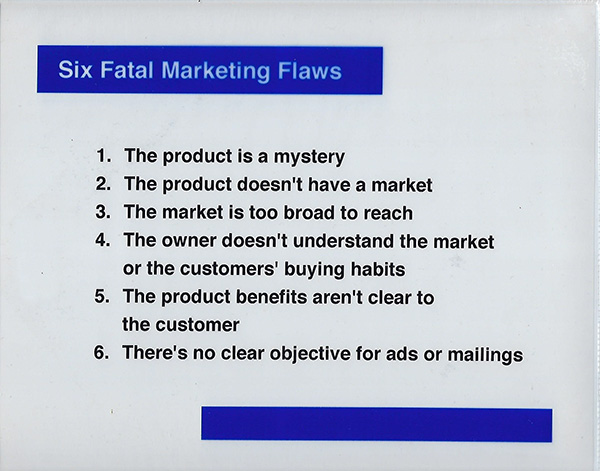
Business Status: Independent Contractor of Employee?
Many one-person startups serve as independent contractors to other businesses. As an independent contractor (for instance, someone who is operating as a sole proprietor or a one-person LLC), you are responsible for paying your own self-employment taxes.
The businesses that hire you save money (compared to hiring an employee) because they don’t pay payroll taxes on your earnings or provide any benefits such as sick pay that they’d give employees.
Over the years, the U.S. Department of Labor has produced various rules to try to prevent businesses from mislabeling employees as independent contractors to cut costs. Those rules change periodically, but this old slide still outlines some of the key aspects of what an independent contractor is.
These are rules you should be aware of both to maintain your own independent contractor status and in the event you hire other contractors to work for you.
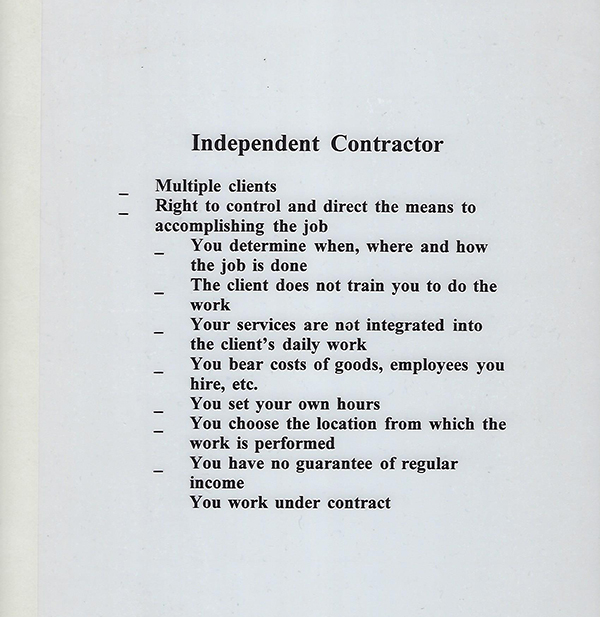
Ways to Increase Startup Profits
It’s not unusual for new small business owners to discover that profits can be hard to come by. Dreams of prosperity fade quickly when you make little or no profit. The ways to increase profits today are still pretty much the same as the tips on this slide, which I think I created around 2000 or 2001.
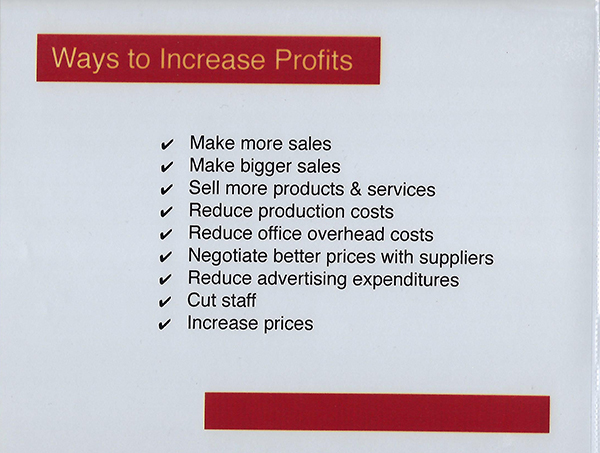
(The tip on selling more products and services refers to offering a wider variety of products and services.)
Business Can Be Risky
When you are a startup, you have your eye on reaching your goals. Bringing in business, making a profit, satisfying customers.
Focusing on those things is important. But you also need to pay attention to and do what you can to avoid the risks associated with being in business. Those risks can have big financial penalties associated with them.
These next two “old” slides outline some of the risks and the steps you can take to avoid risk.
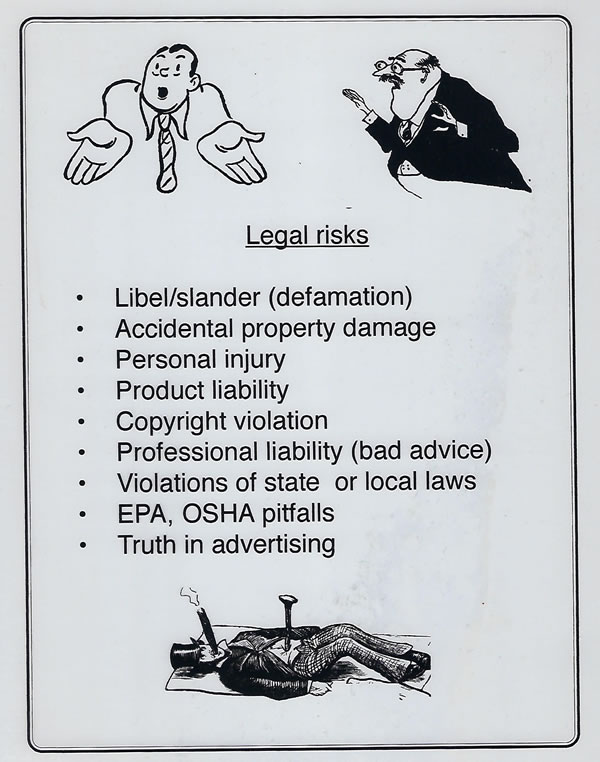
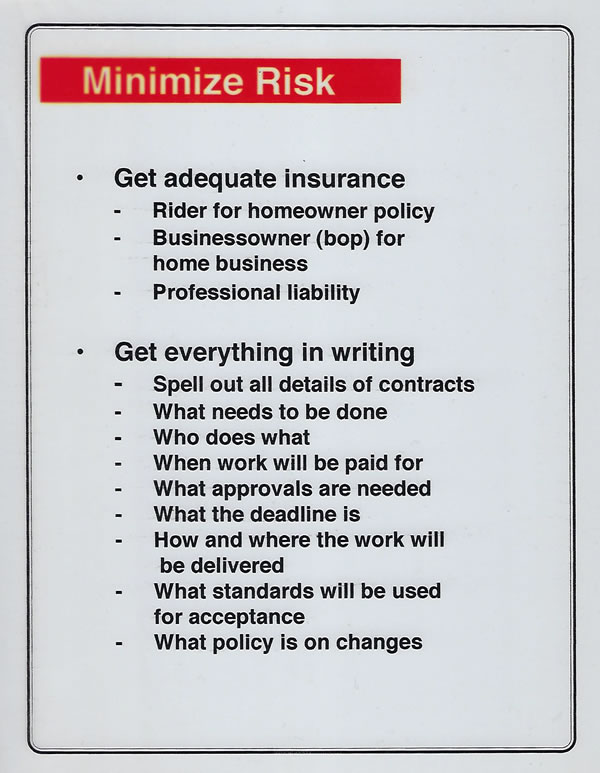
Missing from this slide is a suggestion to either set up as an LLC or incorporate. That information may have been on a slide I’ve lost. But even if you do form an LLC or incorporate, you still need adequate insurance to help protect against financial loss if you are sued.
What Makes Startups Succeed
Technology has made it easier and less expensive to start and run a business than it was in the past. It’s also created new business opportunities to pursue.
For instance, if I were creating presentations today covering the tips on these old transparencies, they’d have eye-catching, professional looking graphics like the image at the top of the page. That’s because there are now graphic tools, databases of stock images, and artificial intelligence tools that make it easy for non-artists to create drawings and images to illustrate a point.
But while you need to adapt technology in your business, technology, by itself, won’t make your startup a success. To succeed, you have to focus on the basics and use technology as a tool to reach your business goals.
Image sources: Top image was created using SketchWow. The remaining images are photos of transparencies I created 20 years ago. The images on those transparencies are very old copyright-free images.
